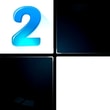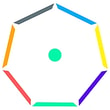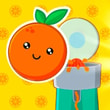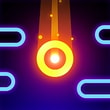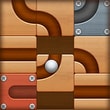🧠✨ The first riddle always smirks back
You tap open the first card and the words grin like they know something about you. A candle that gets shorter the longer it lives. A door that opens but never closes. A city with two houses, truth and lies. Tricky Riddles on Kiz10 lives in that sweet spot where logic meets mischief, where the obvious answer is a decoy wearing sunglasses and the real answer is hiding behind punctuation. It’s not about guessing—it’s about listening to how a sentence breathes, how an image cheats at perspective, how your brain wants to sprint when it should stroll. One card in, you’re hooked. Three cards in, you’re bargaining with your coffee. And by the tenth, you’re the person who mutters to themselves and grins at the ceiling. Good. That’s the fuel.
🔍🧩 What you actually do (and why it’s delicious)
Every level slides a puzzle across the table: a line of text that’s almost too simple, a sketch with one detail that refuses to behave, a mini-logic grid where names, colors, and pets form a polite stampede. You type or tap answers, nudge images for hidden toggles, drag tiles to test “what if,” then hit submit with the kind of confidence that owes everything to one tiny comma you finally respected. The game rewards curiosity, not speed. If you poke the edges, it giggles and yields a breadcrumb. If you rush, it steps aside and lets you trip into your own footprints.
🗣️🖼️ Riddle flavors that keep your neurons awake
Wordplay riddles ask you to hear a sentence instead of just reading it—homophones that ambush meaning, capitalization that hides a name in plain sight, spacing that turns “now here” into “nowhere” if you’re careless. Lateral-thinking riddles set traps with real-world assumptions: if the elevator is broken, maybe the solution isn’t stairs; maybe the solution is to stop assuming you’re inside the building at all. Picture riddles tuck arrows into negative space, transform a shadow into a number, or bury the answer in a reflection that your eyes saw but your mind ignored. Logic puzzles give you small grids with crisp constraints and expect you to be kind to contradictions; one scratch-out, two inferences, and suddenly the solution is inevitable, like a line you were always meant to draw.
🧪💡 Tiny techniques that feel like magic when they click
Read it aloud. Your tongue catches what your eyes skip—the double meaning, the hidden rhyme, the rhythm that betrays a pun. Change the unit. If time or distance looks wrong, ask the riddle what happens when you think in hours instead of minutes, steps instead of meters, seasons instead of days. Ignore the prettiest word. Riddles love to dress the wrong idea in neon. When a word is shouting, it’s usually a decoy; the whisper next to it is where the key hides. Count the letters. If the question mentions numbers without showing any, the total character count or first letters might be the lock-picking kit. And my personal troublemaker: flip the perspective—if it asks “what comes once in a minute,” check if it means literally the letter that appears once in the word “minute.” Suddenly you’re nodding like you solved gravity.
🧭📜 Modes that match your mood swings
Classic Path strings riddles in rising difficulty, a cozy staircase of “aha” moments that politely escalate from mischievous to devious. Blitz Timer is cardio for cortex: sixty seconds, three clues, don’t blink; it’s thrilling, mildly rude, and weirdly good for lunch breaks. Picture Hunt flips pages of illustrated puzzles where circles and arrows become poetry—zoom, scan, spot the thing that makes the rest make sense. Daily Mix is a curated sampler—one of each style, fresh every day—so your streak becomes a tiny ritual you brag about exactly as much as is healthy. And then there’s Mastermind, a sandbox of multi-step riddles that layer wordplay, images, and logic into a single tangled smile; cracking one feels like popping bubble wrap made of ideas.
🎛️🧰 Hints that coach, not spoil
Three levels of help keep pride intact. A nudge hints at the misdirection style: “Try reading the first letters” or “Listen to this one out loud.” A step reveals which assumption needs eviction: “You may not be inside the room.” A reveal, if you must, shows the answer with a short explanation so your future self gets stronger instead of saltier. Use them like tools, not crutches. The best runs end with a few unused hints glowing smugly in your pocket.
🎨📸 Vibes that make thinking feel cinematic
Backgrounds shift from crisp notebook cream to dark mode velvet. Hand-drawn doodles wink and animate when you touch the right detail: a lamppost flickers, a cat’s tail points quietly at the only letter that matters, a compass needle refuses to face north until you rotate the image. Little particles sparkle on “aha,” just enough to feel like applause. Photo mode freezes your favorite puzzles mid-reveal; tilt a breath, hide the UI, stamp a sticker—🧠 “BIG BRAIN,” 🕵️ “GOOD CATCH,” ✨ “SNEAKY SNEAKY”—and send it to the group chat that pretends not to be impressed.
🔊🎵 Sound that whispers solutions without giving them away
A soft metronome nudges patience. Correct answers ping like glass; near-misses thud politely, not punitive. Read-aloud riddles get a voice cue with gentle reverb so you’ll actually listen. When a picture puzzle hides a moving clue, you’ll hear a faint rustle when your finger passes the right spot—tactile audio for visual truths. Headphones add micro-cues; speakers still sell the victory chord that lands like “you clever creature.”
👥🌐 Friendly rivalry and co-op chaos
Leaderboards track streak length, solve time on the daily, and “hint discipline,” a cheeky metric that rates restraint. Ghost solves show your previous route through logic grids so you can compare old-you to new-you and grin at progress. Co-op mode lets a friend see the same riddle with a slight delay; you can ping words, circle image scraps, or drop emojis that range from “🚫 red herring” to “👀 look here” to “🙃 okay but what if.” Watching someone else’s brain turn the corner is half the fun.
🧒♿ Comfort so every player gets to feel brilliant
Color-blind friendly palettes swap hue-based cues for shapes and patterns. Reduced-flash keeps sparkle subtle. Text scales big without weird line breaks; long riddles get “focus mode,” a centered card with distraction-free spacing. Full remap for controls, left-hand layout, and an optional dyslexia-friendly font with generous letterforms. A reading toggle displays syllable dots for tricky lines so you can cadence your way to clarity.
😅📎 Bloopers you’ll call “learning, obviously”
You will overthink a riddle so hard that the answer (“a map”) will feel like a gentle roast. You will stare at a picture for five minutes before noticing that the answer is literally the only object that faces left. You will type the right word with the wrong capitalization and feel personally targeted by grammar. It’s fine. Instant reset. New grin. Better instincts.
🧠📈 A tiny plan that overperforms
First pass: skim fast and mark suspicious words. Second pass: read aloud, then read backward phrase by phrase to shake loose bias. Third pass: test a structural trick—acrostic, letter count, first/last letters. If nothing budges, switch senses: look at the spaces, not the letters; look at the shadows, not the objects; listen to the rhythm, not the nouns. Take a fifteen-second break and stare at anything green; novelty resets attention like a tiny spring. Return, delete your favorite theory, and the solution usually walks in like it paid rent.
🏁🔓 That click when meaning arrives
You tap submit and the word locks into place with a soft, perfect sound. The doodle winks, the background breathes, and the next card floats forward like a dare wrapped in a smile. Tricky Riddles on Kiz10.com is a pocket-sized festival of “oh!” moments—clever wordplay, playful images, crisp logic, and a design that treats your brain like a VIP. Bring curiosity, a sense of humor, and the courage to be wrong on the way to being beautifully right. Ready for the next card? Of course you are. 🧠✨🗝️
 Cunning Thief:
Cunning Thief: 
































